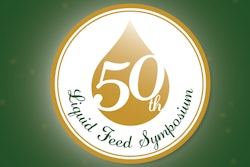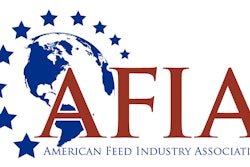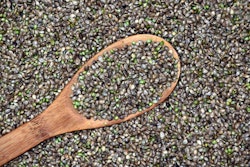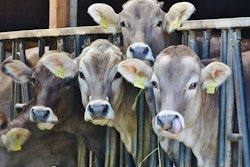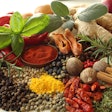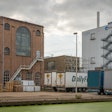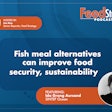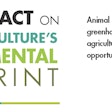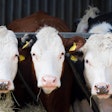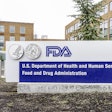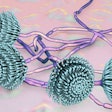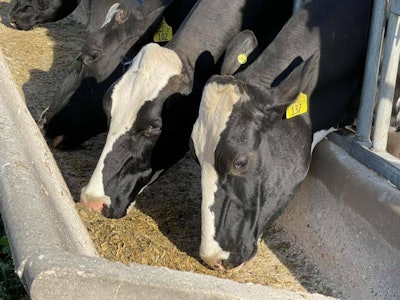
Dairy and beef cows are only as healthy as the feed they ingest — so feed cleanliness and hygiene are imperative for maintaining animal health and a producer’s bottom line.
While molds and mycotoxins are among the most prevalent feed hygiene challenges producers face, they aren’t the only contaminants that threaten feedstuffs.
Phibro Animal Health Corp. has partnered with Dr. John Goeser, Animal Nutrition, Research and Innovation Director,Rock River Laboratory, to host a webinar on the topic of feed hygiene.
Dr. Goeser’s “Animal Nutrition Tools for Diagnosing Dairy and Beef Health and Efficiency Issues Associated with Feed Hygienic Challenges” is now available as part of the MYCOmpass™ webinar series on the Phibro Academy platform andcan be accessed here.
As a director of animal nutrition and research for Rock River Laboratory, which works with producers to analyze feedstuffs for a variety of contaminants, Goeser knows firsthand that when it comes to the feed bunk, there’s often more than meets the eye.
“Historically, producers have looked at fungal contaminants, like mycotoxins, as the potential culprit of feed-based health and production issues,” says Goeser. “While mycotoxins are extremely prevalent and are often to blame, it’s also important to consider other contaminants like certain yeasts or bacteria.”
Even without the presence of clinical signs, these contaminants may affect livestock on a subclinical level, detracting from performance and profitability, according to Goeser. It’s therefore in producers’ best interest to know what’s in their feedstuffs — and this knowledge often requires a deep analysis.
Rock River Laboratory offers a variety of feedstuff analysis panels, including mycotoxins, aflatoxins and trichothecenes, to start — but they don’t stop there. Goeser warns that ash content, bacteria and spoilage yeasts can also pose significant feed challenges.
Five Things to Know About Feed Hygiene Challenges
- Excess rain not only sets the stage for fungal contamination but can also lead to bacterial challenges. “Healthy cows can often deal with feed-borne bacteria, but opportunistic pathogen contamination can contribute to upsets if another stressor or two is present,” Goeser advises. He cautions producers never to spread lagoon water or manure on green or growing crops, as these practices spread bacteria.
- Ash content is an increasing phenomenon that Goeser says producers should put on their radars. Ash dilutes the energy content of feed and makes it more difficult to ferment and preserve. It’s also often accompanied by increased fungal and bacterial loads.
- 时几乎不可能完全alleviate the threat of mycotoxins and other feed contaminants, you can reduce their impact by considering nutritional stress points and implementing protocols and management systems to alleviate stress.
- The presence of spoilage yeasts often indicates deteriorating feed conditions. “We probably under-recognize spoilage yeasts, because we don’t necessarily see them growing like we do with mold, but they are often the first organisms to grow when feed begins to deteriorate,” says Goeser. He encourages producers to take care in interpreting total yeast count data, which also account for live cell probiotic yeast.
- Different mycotoxins act in different ways. Rock River Laboratory typically looks first for the presence of deoxynivalenol, which can affect tissue integrity, rumen metabolism and immunosuppression in beef and dairy cattle.
Fumonisin affects the liver and kidneys, while zearalenone mimics estrogen, interfering with reproductive performance. T-2 toxin causes hemorrhaging and tissue necrosis, but this very potent mycotoxin is often under-recognized.
“Very rarely do we find just one mycotoxin,” says Goeser. “Where there is one, there are usually numerous mycotoxins present, and the industry has a lot to learn about the correlations or lack thereof amongst them.”
Goeser and his team are using technology to make producers aware of mycotoxin “hot spots.” Their Feedscan smart phone app captures GPS coordinates with samples, allowing customized plots with results on a U.S. map. This knowledge, combined with a deeper understanding of dietary hygiene challenges, is helping producers make educated decisions in the field, in storage and at the bunker.
“Together, we can identify the contaminants and create prioritized action and mitigation plans accordingly,” says Goeser. “This targeted approach will help producers optimize animal health and performance.”
Registration for Phibro Academy is free and includes access to Goeser’s webinar and the entire MYCOmpass Mycotoxin Webinar Series; individuals can sign up at academy.pahc.com. To learn more about AB20®nutritional specialty product, a bentonite adsorbent that reduces caking and flowability issues by binding to moisture present in feed, visit pahc.com.
AboutPhibro Animal Health Corp.
Phibro Animal Health Corp. is a diversified global developer, manufacturer and marketer of a broad range of animal health and mineral nutrition products for livestock, helping veterinarians and farmers produce healthy, affordable food while using fewer natural resources.





